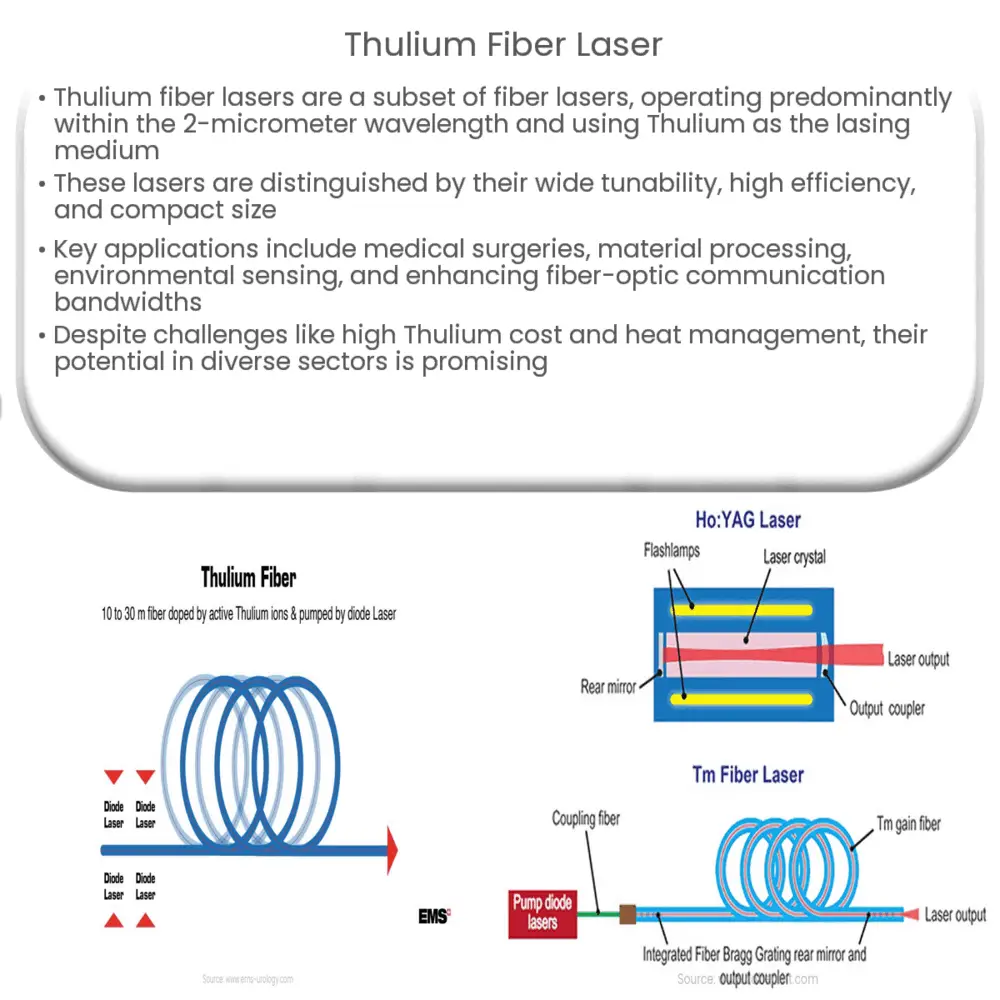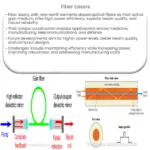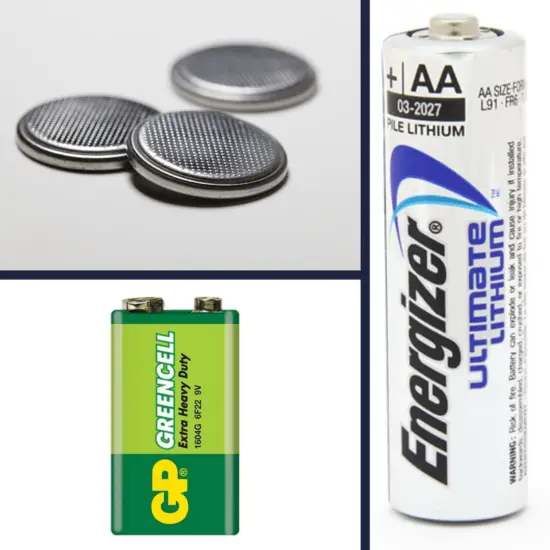Explore the world of Thulium fiber lasers, their unique properties, diverse applications, challenges, and future directions in our comprehensive guide.

Introduction to Thulium Fiber Lasers
Thulium fiber lasers, a subset of the broader family of fiber lasers, have become a focal point in laser technology research due to their unique characteristics and wide range of applications. Predominantly operating within the 2-micrometer wavelength region, these lasers utilize Thulium (Tm), a rare-earth element, as the primary lasing medium.
Working Principle of Thulium Fiber Lasers
The fundamental operation of a Thulium fiber laser is underpinned by the characteristics of Thulium as a lasing medium. Thulium ions, typically embedded in a fiber core, become excited when exposed to specific wavelengths of light, usually in the range of 790 nm or 1.6 μm. Once excited, they emit light at around the 2 μm wavelength when they return to their ground state, producing the characteristic output of a Thulium fiber laser.
Unique Characteristics of Thulium Fiber Lasers
- Wide Tunability: Unlike many laser types, Thulium fiber lasers exhibit a broad tuning range. This feature grants them flexibility in various applications, including medical and material processing applications, where precise control of wavelength is crucial.
- High Efficiency: Thulium fiber lasers have the potential for high optical-to-optical efficiency. This property makes them a more energy-efficient solution compared to other laser types, resulting in lower operational costs and heat generation.
- Compact Size: As with other fiber lasers, Thulium fiber lasers can be made into compact systems due to the characteristics of the fiber medium. This trait is advantageous for applications where space is at a premium.
Applications of Thulium Fiber Lasers
- Medical Field: In medicine, the Thulium fiber laser’s unique wavelength makes it ideal for surgical procedures, particularly for tissue ablation and in ophthalmology. Its light is well absorbed by water and biological tissues, enabling precise cutting and coagulation with minimal collateral damage.
- Material Processing: These lasers are also used extensively in material processing tasks, such as welding, cutting, and engraving, particularly for materials that absorb well in the 2 μm wavelength region.
To fully grasp the potential of Thulium fiber lasers, we must delve further into their advanced applications, the challenges they face, and the future directions of this technology.
Advanced Applications of Thulium Fiber Lasers
The advanced applications of Thulium fiber lasers go beyond the medical field and material processing. They are finding increasing use in areas such as environmental sensing, where their ability to be tuned to specific wavelengths can help detect certain gases. Additionally, in the field of telecommunications, Thulium-doped fiber amplifiers (TDFA) are being used in the S-band (short wavelengths) to increase the bandwidth of fiber-optic communication systems.
Challenges and Future Directions
Despite their advantages, Thulium fiber lasers face challenges. The primary challenge is the high cost of Thulium as a rare-earth element, which increases the overall cost of the lasers. Also, managing heat dissipation in high-power operations can be challenging. The future direction of this technology involves overcoming these challenges, enhancing efficiency, and expanding tunability.
Research is also being carried out to explore the potential of Thulium fiber lasers in other areas, such as in high-power ultrafast laser systems, in the hopes of leveraging their unique properties to push the frontiers of laser technology.
Conclusion
In conclusion, Thulium fiber lasers, with their unique wavelength, broad tunability, and high efficiency, have shown great potential in a wide range of applications, from medical surgeries to material processing, and even telecommunications. Although they face certain challenges, their prospects remain bright. As our understanding of this technology deepens and as innovations continue to emerge, we can anticipate that Thulium fiber lasers will play an even more critical role in various fields, pushing the boundaries of what is possible with laser technology.




